| Current Issue |
| View as PDF |
| features |
|
7eventeen
steps to a greener life in the valley |
| sections |
| Habitat Hits |
| Grow it |
| Decorate it |
| Source it |
| Do it |
| Know it |
| Build it |
| Organize it |
| Fix it |
| Pick it |
| maps |
|
Ketchum
& Sun Valley |
| the guide |
| Last Summer |
| Last Winter |
| Last Fall |
| Contact Us |
| About Us |

|
|
Copyright © 2008 Express Publishing Inc. All Rights reserved. Reproduction in whole or in part in any form or medium without express written permission of Express Publishing Inc. is strictly prohibited. The Sun Valley Guide magazine is distributed free four times a year to residents and guests throughout the Sun Valley, Idaho resort area communities. Subscribers to the Idaho Mountain Express newspaper will receive the Sun Valley Guide with their subscription. |


7eventeen
ways to be green
in the Wood River Valley
written by:
Jennifer Tuohy, Dana DuGan, Greg Moore and Cornelia Russo
Whether you are a dyed-in-the-wool environmentalist or a serious
skeptic, the one thing we all have in common is a love for the Wood
River Valley. And, as temporary stewards of this beautiful place, it is
our responsibility to have a positive impact on it. From following the
three Rs (reduce, reuse, recycle) to monitoring the amount of carbon
dioxide we release into the atmosphere, there are many small ways we can
do our part. The Habitat team has rounded up these handy tips to help us
all keep this valley green (and save money, too).
1Know
your CO2
(Above Image)
Every person
on the planet has a carbon footprint, the amount of carbon dioxide (CO2)
he or she is responsible for releasing into the atmosphere. One of four
major greenhouse gases, CO2 contributes to the greenhouse effect,
a naturally occurring phenomenon that warms the planet. Human activities
such as the combustion of fossil fuels and deforestation have raised the
concentration of CO2 in the atmosphere by about 35 percent since
the start of the Industrial Revolution. This increase is thought by
scientists to be causing the planet’s climate to rapidly change and warm.
According to the Environmental Resource Center, the average American
contributes nearly 45,000 pounds of CO2 to the atmosphere
annually. You can help cut this figure by reducing and offsetting your
carbon footprint. Go to
epa.gov/climatechange/emissions/ind_calculator.html
and calculate how many tons the activities of your household add to the
atmosphere. Then mitigate your emissions using the ERC’s CO2mmit!
program. "The program helps people see how their footprint compares to other
‘normal’ Americans and gives them tangible ways to reduce their footprint,"
said Craig Barry, executive director of the ERC. Sign up at
ercsv.org. You
can also purchase carbon offsets (which reduce an equal amount of carbon
emissions with one activity to counterbalance contributions from another) at
Web sites such as carbonfund.org and
terrapass.com. For more hints and tips
on how to reduce that smelly footprint, read on...

2
Go organic
Buying organic food in the
Wood River Valley is now relatively easy, thanks to an expanding selection
of organic produce and products at local supermarkets and the establishment
of the local farmers’ markets. Purchasing organic food supports organic
farming, a form of agriculture that uses no toxic or persistent fertilizers
and pesticides. Consequently, there is little harm to soil life, depletion
of nonrenewable resources or impact on air or water quality. For meat and
dairy, it means the animal was raised on feed that meets the same standards
as produce and was given no growth-promoting hormones or antibiotics. So,
buy organic to sustain global health, animal health and your health.
Unfortunately, organics are not always an option, due to availability or
budget. In that case, turn to the Environmental Working Group’s Shopper’s
Guide to Pesticides in Produce, which highlights "The Dirty Dozen"
(produce you should strive to buy organic)—peaches, apples, sweet bell
peppers, celery, nectarines, strawberries, cherries, lettuce, grapes
(imported), pears, spinach, potatoes—and "The Cleanest 12" (those
lowest in pesticides)—onions, avocado, sweet corn (frozen), pineapples,
mangoes, sweet peas (frozen), asparagus, kiwi, bananas, cabbages, broccoli,
eggplant. For the full guide, visit
foodnews.org/walletguide.php.
3
Green business
leaders
Many valley-based businesses
have made huge steps to improve their green credentials. From building the
first commercial Leadership in Energy and Environmental Design (LEED)
building in the Wood River Valley (as Rocky Mountain Hardware did) to
ensuring their employees travel to work in the most environmentally friendly
way possible (as Webb Landscaping does) the various changes these businesses
have made make them stand out as eco-leaders in our community. However, for
many businesses such steps are out of reach. Here are a few smaller steps
local business owners can take to reduce their company’s carbon footprint:
- Reduce energy costs by using CFL light bulbs and keeping temperatures comfortable.
- Reduce paper waste by filing electronic billing statements and paying employees through direct deposits.
- Buy recycled office supplies.
- Use green cleaning products.
- Supply ceramic mugs for coffee breaks.
- Reuse large envelopes and packaging materials.
-Contact Clear Creek Disposal for help implementing a work-site-recycling plan ( ccdisposal.com, 726.9600).
- Contact the ERC to arrange a consultation on how to be more green in business (ercsv.org, 726.4333).
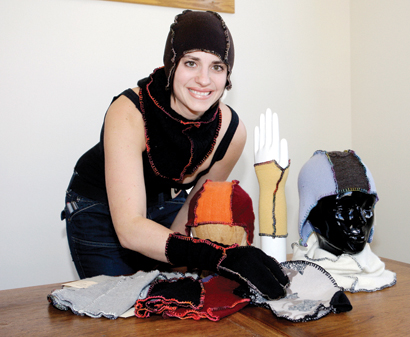
4
You are what you
wear
Taking clothes recycling
to a new level, LaRece Egli of Hailey (pictured) creates a unique collection
of accessories and garments from fabric remnants she finds at garage sales
and secondhand stores. When you consider that growing conventional cotton
accounts for 16 percent of global chemical pesticide use, more than any
other single crop, it is clearly important to get the most out of a piece of
clothing before it diverts to the landfill. The easiest way to recycle
fabric is to shop at and donate to secondhand clothing stores, and with a
bevy of thrift stores valley-wide, there is ample opportunity to find
wearable, eco-friendly wardrobes. In Ketchum, high-end vintage clothing is
available at Déjà Vu, while contemporary consignment clothes can be found at
The Dollhouse and Worth Repeating. You can also recycle Patagonia clothes at
outdoor clothing stores.
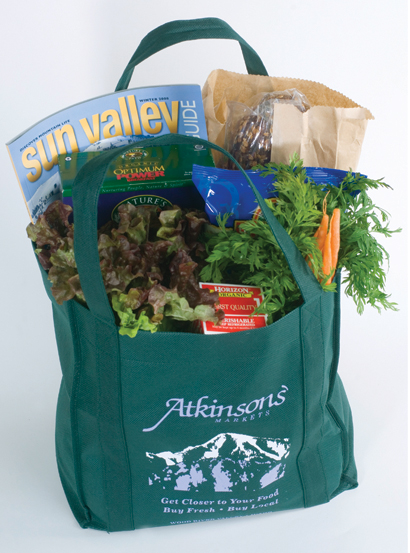
5
Be a green grocer
After unloading your
weekly groceries, how many plastic bags do you throw away or stash in a
deep, dark corner of the pantry with the weak promise you’ll reuse them?
Help is at hand. For only 99 cents, purchase these snazzy, reusable shopping
bags at local supermarkets. Made of non-woven polypropylene, they are more
convenient than their plastic counterparts and far more eco-friendly than
paper bags (which consume four times more energy during manufacturing than
plastic bags and require 91 percent more energy to recycle). Reusable bags
cut down the amount of waste diverted to landfills, reduce the need to make
more plastic and paper bags and gain you a CO2 reduction of 34 pounds/year.

6
Green decor
Many traditional home
décor materials have a negative environmental impact due to the source of
the material or the manufacturing process. Thankfully, the mainstream design
industry is catching on to the green scene. "You no longer have to
compromise your design tastes to protect the environment," said Dottie
Spencer, manager of Sun Valley Rug & Tile. "There are now many products
available that are not just eco-friendly but design-attractive too." Spencer
recently turned the Sun Valley Rug & Tile showroom into a green-friendly
showroom. "Eighty percent of our products are green," said Spencer. Inside
you can find tiles made from recycled materials (such as glass and stone)
and carpets and flooring made from environmentally sustainable materials.
Wools of New Zealand carpets (pictured left) are a popular option, along
with other sustainable flooring materials (such as sisal, reed and bamboo).
Wool is not only sustainable (it is generated from a totally renewable
resource, grass) it is also biodegradable and releases no harmful emissions.
Also look for products manufactured in an ecologically sound way. A material
may be green but its manufacturing process may not be. Spencer has committed
to working with only eco-friendly companies and LEED certified
manufacturers. Locally, Rocky Mountain Hardware has made such a step. Its
products are now classified as green because, as well as being made from
recycled bronze, they are manufactured in the company’s new LEED facility in
Hailey.
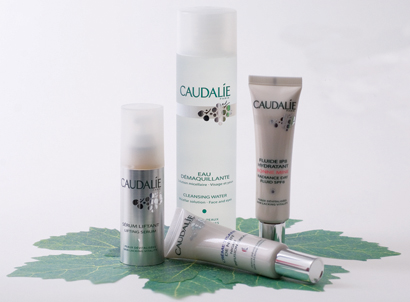
7
Beauty and the
earth
Is what you put on your
face as healthy as what you put in your body? It can be, with a little
research. Misleading labels and lengthy ingredient lists abound in the
cosmetics industry. As a general rule follow these recommendations from
National Geographic’s The Green Guide: Avoid cosmetics that contain
antibacterials, parabens, talc, mercury, synthetic colors, fragrance,
formaldehyde-releasing preservatives and ingredients derived from petroleum.
And remember, just because a product says it is natural or botanically
derived, that doesn’t mean it is organic or free of chemicals, read the
label. Several good natural skincare lines are available at local
supermarkets and health food stores, many of which use some organic
ingredients. Look for Aubrey Organics, Jason, Zia, Alba Botanicals, Beauty
Without Cruelty, Primavera Essential Oils and Better Botanicals. Higher-end
organic beauty products by Sundari and Caudalie (pictured) are stocked by
Pure in Ketchum. For the hair, Privé, an organic line of French herbal-blend
products, can be found at the Sun Valley Salon. Ketchum’s Vertu salon uses
Organic Colour System.
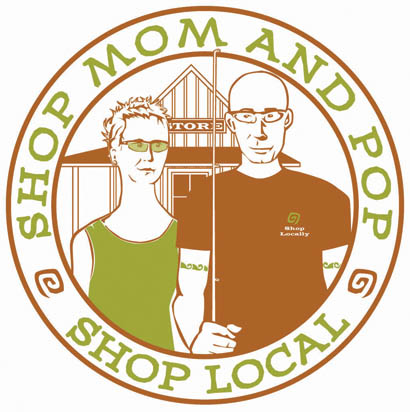
8
Shop locally
These cute Shop Mom & Pop
logos that have sprung up across the Wood River Valley aren’t just about
helping the valley be economically prosperous. Shopping locally is one of
the cornerstones of the environmental movement. Understanding how goods are
transported and how much energy is expended in that process, and then
choosing appropriately, is essential to cut greenhouse gas emissions. Every
time you buy a product locally or choose an item made in Idaho over one made
in China you significantly reduce your carbon footprint. For example, the
potential CO2 reduction of buying locally grown produce is 5,000 pounds/year
per person. And no, shopping online is not more green than shopping locally.
A five-pound package shipped across the country by air creates 12 pounds of
CO2. However, all this doesn’t mean a trip to Costco should leave you draped
in shame; buying in bulk has the ecological benefit of reducing packaging
waste. Next time, carpool or ask your neighbors what you can pick up for
them.
9
Care to compost
Convert organic waste
(yard trimmings, leaves and kitchen scraps) into a mixture that improves
garden soil and reduces dependence on commercial fertilizers, and even
water, by adding essential nutrients and microorganisms back into soil.
Composting can reduce your carbon footprint by 616 pounds/year. Select a
container (bins can be made of anything that allows for mixing, watering and
has some ventilation) or just start a pile outside. Begin your compost with
the first grass clippings and leaves of the spring. Add more items to make
green and brown layers along with kitchen waste (except for eggshells, never
compost animal by-products). Add twigs and coarse items to provide air
circulation. Turn the pile once a week. If you need some professional
advice, the Environmental Resource Center teaches a workshop on vermiculture
(composting with worms). If making your own is too overwhelming, commercial
outfits in the valley make organic compost. "My compost is based on
ground-up organics such as tree limbs, grasses and bark," said Dennis
O’Brien of Bald Mountain Excavation. "Then I mix in recycled horse manure,
shavings and cow manure in my secret formula."
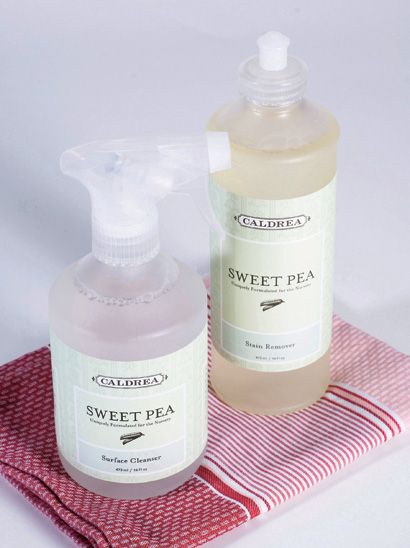
10
Clean green
Attractive, sweet-smelling
and eco-friendly—how can you say no? Switching to green cleaning products
reduces your carbon footprint by 12 pounds/year, is healthier for you and
your family, and avoids potential water pollution and depletion of
non-renewable resources associated with traditional cleaning products.
Consequently, these products have exploded onto supermarket shelves.
Environmentally friendly cleaning product manufacturers such as Caldrea
(pictured) Ecover, Seventh Generation, Mrs. Meyers, Method and Dr. Bronner’s
can be found locally. These brands offer an array of product lines to do
your dirty work. According to National Geographic’s The Green Guide, the
majority of these products work as well as their traditional counterparts,
albeit with a little extra elbow-grease. You can also make your own cleaning
products with natural ingredients like lemon juice, vinegar and baking soda.
Visit
greenlivingonline.com/HomeGarden/three-natural-cleaners for recipes.

11
Get serious about solar
Sue Peterson’s Hailey home
is about to achieve the Zen-like status of a zero-energy-use home. Following
the installation of solar electric panels on its roof, her NorthStar home
should now consume only as much energy as it produces. "Sue’s solar system
should make hers a zero-energy home, because we designed it to match her
electrical load," said Morgan Brown of Sun Valley Solar. Harnessing the
clean energy of the sun to heat and/or power a home is the apex of being
green—the apex of consciousness and the apex of cost. Two types of solar
energy can be used, passive solar and active solar. Passive solar uses the
sun’s energy to heat and cool living spaces without the aid of mechanical
units. Opening and closing windows, installing thermal mass (such as
concrete floors and countertop materials that store heat) and designing a
structure to capture the best of the sun are components of passive solar.
"Active solar can be totally redundant if you’ve done passive right," said
Brown. Active solar is the installation of mechanical tools that harness the
power of the sun. These include solar electric panels that supply all the
electricity in a home (a system costs from $15,000 to $500,000) and solar
heating panels to heat water (which runs from $8,000 to $10,000). The good
news? You don’t need to build a brand new home to fit solar into your life.
"Retrofitting solar electric is not terribly difficult as long as you have
solar access (direct sun for at least four hours a day) and space to put the
panels or trackers (on the roof or in the yard)," said Brown. Chris and
Phoebe Pilaros’ home in old Hailey (pictured) is an example of a successful
solar retrofit.
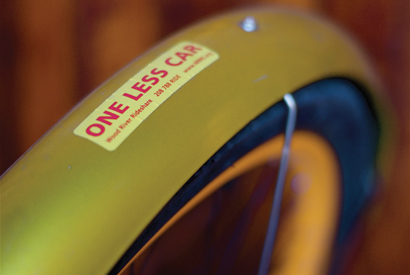
12
Save Highway 75
Green transportation is an
integral part of green living. According to environmentaldefense.org, the
U.S. is responsible for 45 percent of the world’s automotive CO2 emissions,
with U.S. autos emitting more than 333 million tons of CO2 each year. Every
little bit you do helps mitigate these overwhelming statistics. First, leave
the car in the garage and take advantage of the valley’s extensive local bus
system and bike trails. Every gallon of gas you save by walking or riding
your bike instead of using your car is a CO2 reduction of 20 pounds. Riding
the bus is a CO2 reduction of 8,165 pounds/year. Mountain Rides (mountainrides.org)
offers a variety of programs that help limit the number of cars on the
valley’s highway. These are: The Around Town Bus—a free bus service that
runs throughout Ketchum/Sun Valley daily from 7:30 a.m.-midnight. The Down
Valley Bus—For $2.25 each way you can travel between Bellevue, Hailey,
Ketchum and Sun Valley from 6 a.m. to 8 p.m. The Commuter Club—This new,
year-round program starts this spring with Bike to Work Day on May 20.
Vanpool—Geared toward local businesses that have a large out-of-area
workforce, this program operates eight 15-passenger vans daily between Twin
Falls and Ketchum. Individuals sign up to ride the vans on a monthly basis
(starting at $128) and businesses can sign up their employees. Webb
Landscaping currently uses five of the vans for its workforce. Carpooling—If
you can’t abandon the personal vehicle altogether, Mountain Rides’ new
online ride-matching program, rideshareonline.com, will match you with
people who share your commute. "The single-occupancy vehicle is our enemy,"
said Sean McLaughlin of Mountain Rides.

13 Buy biofuels
Craig Barry of the Environmental Resource Center (pictured) is an avid proponent of biodiesel. The organization recently converted this truck to run on vegetable oil, and is crafting a mobile learning center powered by biodiesel. Biodiesel is available at United Oil in Hailey. Its cost is comparable to regular diesel and it can be used (alone or blended with regular diesel) in any vehicle equipped to run on regular diesel. The primary ecological benefit of biodiesel is that spills are nontoxic and biodegrade four times faster than petroleum spills. Using biodiesel also helps reduce dependence on foreign oil. Another, more widely known biofuel in use in the U.S. is ethanol, most of which is produced from corn. Ethanol is generally mixed with gasoline to create a 10 percent blend. All gasoline-powered vehicles on the road can use E10, and many new cars can use a blend of 85 percent ethanol. However, E85 is currently only available at three gas stations in Idaho: in Boise, Nampa and Lewiston.
14
A lean green machine
Those nippy little compact
Toyotas that have been spreading like wildfire throughout the valley over
the past year or so are Priuses. One of the greenest cars available, a Prius
gets about 48 mpg in our valley. Driving a fuel-efficient car (one that gets
more than 41 mpg) nets you a CO2 reduction of 3,687 pounds/year. Use this
online guide epa.gov/greenvehicles to help choose the cleanest and most
fuel-efficient vehicle for your needs. If a new car is not in your immediate
future, there are things you can do to make your current one a stronger
shade of green. Keep your tires at the correct pressure—they’ll last longer
and increase fuel economy (a CO2 savings of up to 700 pounds/year). Drive
better—studies have shown that up to 30 percent of the difference in mpg is
due to driving habits. You can save more than a ton of CO2 a year by
accelerating slowly and smoothly and staying under 60 mpg. Visit
ercsv.org
for more tips on green driving.
15
Know green
Educating yourself on how
to lead a green life is a constant process. The more you know about being
green, the more easily it fits into your lifestyle. Attend these upcoming
green events and absorb some serious green energy.
- Green Your Scene environmental series—March 11-13 at the Community Library, Ketchum. The opener to the 48Straight weekend of activities in Sun Valley, Green Your Scene will feature lectures on the impact of climate change on mountain communities.
- Idaho Green Expo (idahogreenexpo.org)—May 17-18 at the Boise Center on the Grove. Showcasing environmentally friendly products and services, this free event features exhibitors, workshops and seminars on green-living topics.
- Sun Valley Sustainability Conference (sunvalleysustainability.org)—October 23-25, Sun Valley Resort. "The three major themes are sustainability, green building and responsible growth in the community," said Ellen Gillespie of Sun Valley Events. Alongside lectures, the conference will host an exhibit hall for green home and garden products and a tour of green homes, businesses and gardens in the valley.
16
Spruce up your home
Your home consumes the
majority of energy associated with your carbon footprint. Implement as many
of these energy-saving improvements as possible and give it the green glow
it deserves.
- Insulate. Insulate. Insulate. Insulating your home is one of the most cost effective ways to improve its energy efficiency. ENERGY STAR® estimates a savings of up to 10 percent on a home's annual energy bill through proper insulating.
- Install programmable lights and blinds. C&R Electric (candrelectric.com) can put your blinds and lights on timers, helping capture as much sunlight as possible for heating and cooling efficiency. Programmable lights and dimmer switches also reduce the amount of light you use, reducing energy use.
- When it's time to replace household appliances, purchase items marked with the ENERGY STAR
® label. These products reduce greenhouse gas emissions and cut monthly energy costs, an annual savings of over $600.- When light bulbs burn out, replace them with CFL (compact fluorescent lamp) or LED (light emitting diode) bulbs. According to carbonfund.org, each bulb can save $40 or more over its lifetime, and by replacing one frequently used bulb your CO
2 reduction is 500 pounds/year.- Install a programmable thermostat, you will recoup this $50 expense within the first year.
- Install an on-demand water heater. Water heating accounts for 14 to 25 percent of a home’s energy consumption. The constant heating of a full tank is unnecessary, tankless or instantaneous heaters provide hot water on an as needed basis.
- Turn down your water heater thermostat (120 degrees is usually hot enough), a CO
2 reduction (for each 10-degrees adjustment) of 500 pounds/year.- Conduct an Energy Audit on your home (idahopower.com/energycenter).
- Enroll in Idaho Power’s Green Power Program (IdahoPower.com/energy center/greenpower) and contribute to its green utility resources. You can also have a portion of your energy needs supplied from those sources, a CO
2 reduction of 10,496 pounds/year.

17
Read green
- The Green Book by Elizabeth Rogers and Thomas Kostigen provides hundreds of green solutions for all areas of life, from the smallest efforts to those that have the biggest impact.
- Living Organic by Adrienne Clarke, Helen Porter, Helen Quested and Pat Thomas, is full of ideas, photos, tips, recipes, resources and practical advice.
- In Defense of Food is Michael Pollan’s new pro-vegetable manifesto. Also check out his insightful journey up and down the food chain, The Omnivore’s Dilemma: A Natural History of Four Meals.
- Fields of Plenty: A Farmer’s Journey in Search of Real Food and the People Who Grow It by Michael Ableman is a readable travelogue, a discourse on the agrarian movement, with recipes. It covers Ableman’s 12,000-mile journey with his son in a VW van to farms across the country.
- What Can I Do? An Alphabet for Living by Lisa Harrow, has a list of Web sites to help anyone do anything in an eco-friendly way.
- Cool Green Stuff by Dave Evans, is a handy guide to finding recycled, sustainable and renewable objects to enhance your habitat.